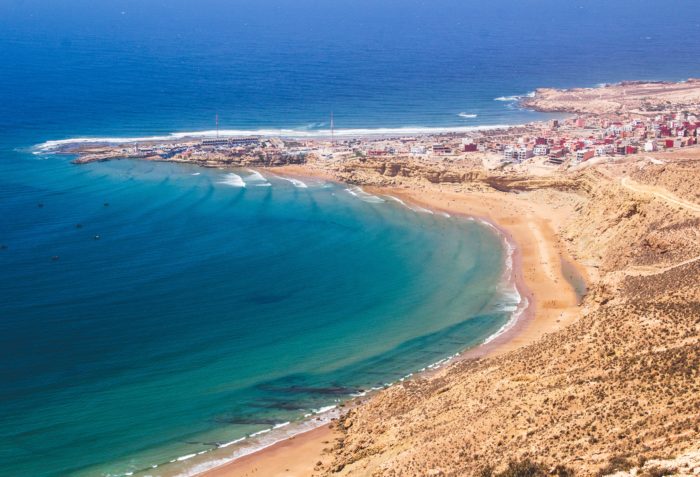
Around the world, every day, scientists are trying to solve the greatest catastrophe that humanity has ever faced. The ticking clock of climate crisis is moving closer and closer to midnight. This quandary, like the Cold War and Space Race, will define our generation, and our future.
In the quest for renewable power, solar and wind energies have long held the front line. However, in order to truly replace fossil fuels, energy sources need to be limitless, consistent, and reasonably sourced. Solar and wind—which depend on seasonal and daily variations—just don’t fulfill these requirements. Though both resources are growing in use and reliability, we still need a better solution.
The US Department of Energy has spent over $100 million in researching marine hydro-kinetic technologies. This includes wave energy, tidal energy, and energy from ocean currents. Several countries have already implemented the first two, which use energy from waves and tides to power turbines. However, these technologies are restricted, as not many places have waves that are strong or consistent enough to create much energy.
So how about the energy from ocean currents? They are constant—ocean currents have been flowing for millennia. And, they’re consistent—scientists can easily model their behavior far out into the future. They’re also incredibly powerful. Since ocean water is so much denser than air, these currents carry far more power than wind.
A study by the Georgia Institute of Technology has shown that currents off of the coast of Florida hold enough energy to power 3,800,000 homes, which is about half the state. The Gulf Stream itself, studies have shown, could create four times as much energy.
But ocean current turbines aren’t entirely harmless. We still need to study how these farms will affect marine wildlife, particularly species that use the currents for migration or feeding. There is also the question of marine growth on the turbines themselves, as well as the cost of implementation and maintenance.
Scientists are looking into solutions, and many trials and errors have produced positive results. Much progress has been made, for example, in creating non-toxic, non-soluble coatings for marine use. A company called CrowdEnergy, located in Florida, has created turbines that function in conservation-specific ways, with specific acoustic signatures that won’t affect the marine life around it. These turbines are also magnetically shielded, to keep them from producing magnetic fields, which might negatively affect the surrounding ecosystem.
Already, several projects are underway to test the reliability of ocean currents as a power source. A company called OceanBased just signed a memorandum with Florida Atlantic University, to build the largest ocean current energy farm in the ocean. When completed, in as little as five years, the farm will have capabilities up to 20 MW, and will be entirely connected to the shore and the US transmission system.
When it comes to climate change, there will not be a single, all-or-nothing solution. Our world will depend on a variety of fuel sources, combinations of solar and wind, ocean current and tidal, and probably some we haven’t even thought of yet. At this point in the process, there are no wrong answers. We need creative, intersectional solutions.
Fifty percent of the world’s population live within fifty miles of the ocean, and that number will only grow. A near-infinite, consistent, powerful, and clean source of energy right off the coast sounds too good to be true, but maybe it’s not. Right now, the ocean turbines and other technologies are still far behind solar or wind, in terms of research and development. But if we approach these questions with creativity and ingenuity, there’s no telling what we might come up with.
When American scientists first set their eyes on the moon, it wasn’t simply out of great imagination. The fear of the Atomic bomb, the Soviet powers, and the Cold War drove us toward this national goal. If we couldn’t make it to the moon, Americans feared, democracy would not survive.
A similar future faces us now. Developing green energies may be expensive, difficult, and require major commitment from industry, government, and science alike. If we don’t develop these technologies, we won’t have much of a future to look forward to. On May 25th, 1961, JFK told the American people, “Now it is time to take longer strides—time for a great new American enterprise—time for this nation to take a clearly leading role…which in many ways may hold the key to our future on earth.” We need similar devotion now, to the development of clean energy and renewable fuel.
Also by Jules: Kelp Farming Could Absorb Carbon & Reduce Worst Effects Of Climate Change
Related: Total Lack of Arctic Ice, aka Blue Ocean Event, May Happen Soon
Get more like this—Subscribe to our daily inspirational newsletter for exclusive content!




